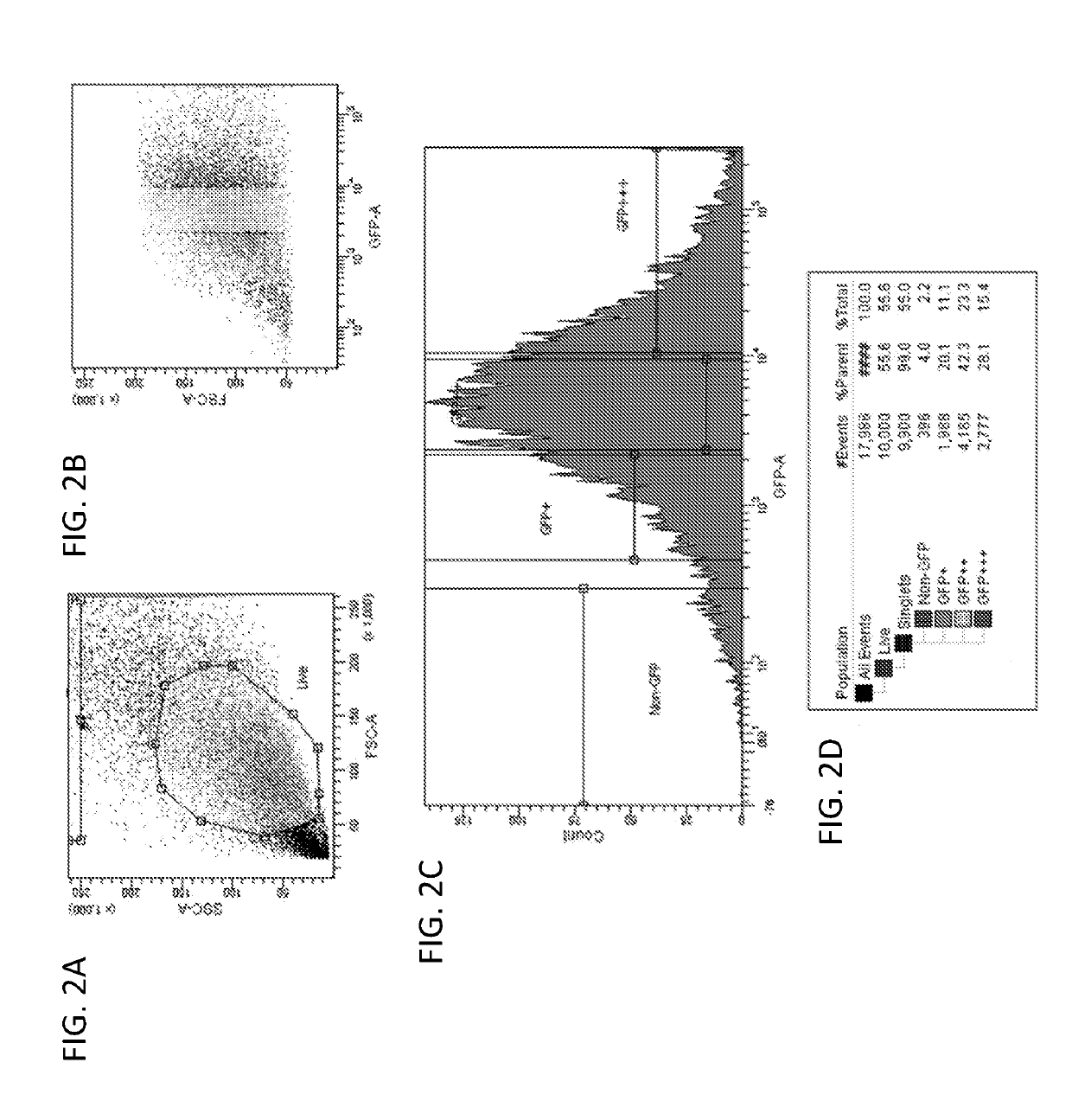Variant RNAi
a technology of rnai and molecules, applied in the field of variable rnai molecules, can solve problems such as pathological and behavioral aberrations, and achieve the effects of robust and sustained suppression of target genes, suppressing genes, and being a useful tool for gene silencing
- Summary
- Abstract
- Description
- Claims
- Application Information
AI Technical Summary
Benefits of technology
Problems solved by technology
Method used
Image
Examples
example 1
RNA-Htt Reduces Htt Expression In Vitro
[0202]Huntington's disease (HD) is a fatal autosomal dominant neurodegenerative disease caused by an increase in the number of polyglutamine residues in the huntingtin (Htt) protein. With the identification of the underlying basis of HD, therapies are being developed that reduce the expression of the causative mutant Htt. RNA interference (RNAi) that seeks to selectively reduce the expression of such disease-causing agents is emerging as a potential therapeutic strategy for this and similar disorders. In order to examine the merits of RNAi therapy in a mouse model of HD, a targeting sequence that was previously shown to effectively target mouse and human Htt mRNAs (McBride et al., (2008) Proc. Natl. Acad. Sci. USA 105:5868-5873) was embedded into an artificial miRNA backbone and cloned into a previral vector.
[0203]Methods
Animals
[0204]All procedures were performed using a protocol approved by the Institutional Animal Care and Use Committee at Ge...
example 2
RNA-Htt Injection into YAC128 Mice Results in Widespread Striatal Transduction and Reduction of Htt mRNA
[0218]Following verification of AAV2 / 1-miRNA-Htt's ability to suppress Htt mRNA levels in vitro, the ability of this vector to silence Htt expression in the striatum of YAC128 mice was evaluated. To determine the percent transduction of cells within the striatum following intra-striatal injections of AAV2 / 1-miRNA-Htt, fluorescent activated cell sorting (FACS) was employed according to the methods described in Example 1.
[0219]Results
[0220]Adult YAC128 mice received bilateral intra-striatal injections of AAV2 / 1-eGFP-miRNA-Htt (4.5×1012 vg / ml) or the control vector, AAV2 / 1-eGFP (5.6×1012 vg / ml). One month following injection the striatal region of each animal was micro-dissected and eGFP-versus non-eGFP-containing cells were sorted and quantified by FACS analysis (FIGS. 3A&B). The data showed that greater than 80% of the striatum was transduced by the vector as demonstrated by the pr...
example 3
RNA-Htt Injection into YAC128 Mice does not Cause Overt Toxicity in the Brain
[0222]To determine whether injections of AAV2 / 1-miRNA-Htt and the consequent reduction of Htt conferred neurotoxicity and inflammation, cellular morphology and integrity of striatal sections were examined by hematoxylin and eosin (H&E) staining according to the methods described in Example 1. The levels of the neuroinflammatory markers glial fibrillary acidic protein (GFAP, a marker of astrocytes) and Iba-1 (a marker of microglia) were also examined at 1 and 5 months post-treatment.
[0223]Results
[0224]Analysis by H&E showed no remarkable histopathological changes in the injected brain regions (FIGS. 5A-C). No notable increases in either the number of GFAP-positive astrocytes (visualized by immunohistochemistry) or the levels of GFAP mRNA (quantitated by QPCR) were observed in the injected regions at 1 or 5 months post-injection when compared to AAV2 / 1-Null-treated animals (FIGS. 5D-F; FIG. 5J). However, an i...
PUM
| Property | Measurement | Unit |
|---|---|---|
| Time | aaaaa | aaaaa |
| Time | aaaaa | aaaaa |
| volume | aaaaa | aaaaa |
Abstract
Description
Claims
Application Information
 Login to View More
Login to View More - R&D
- Intellectual Property
- Life Sciences
- Materials
- Tech Scout
- Unparalleled Data Quality
- Higher Quality Content
- 60% Fewer Hallucinations
Browse by: Latest US Patents, China's latest patents, Technical Efficacy Thesaurus, Application Domain, Technology Topic, Popular Technical Reports.
© 2025 PatSnap. All rights reserved.Legal|Privacy policy|Modern Slavery Act Transparency Statement|Sitemap|About US| Contact US: help@patsnap.com



